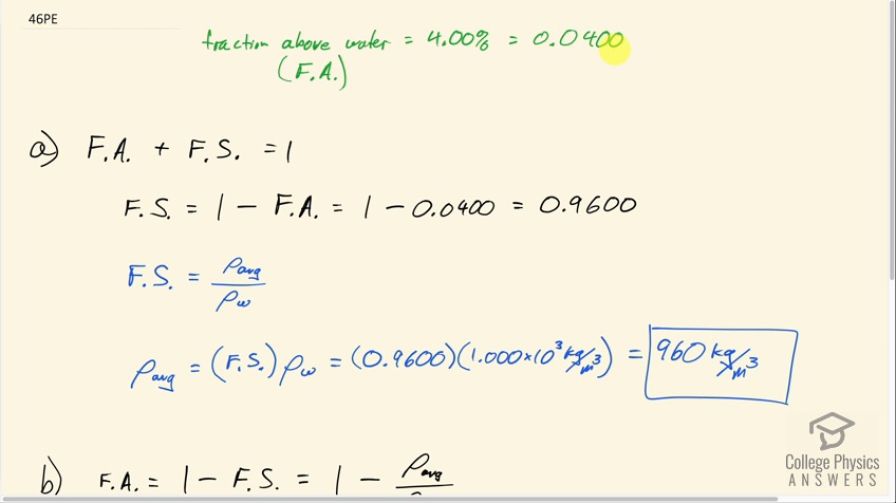Question
(a) What is the density of a woman who floats in freshwater with 4.00% of her volume above the surface? This could be measured by placing her in a tank with marks on the side to measure how much water she displaces when floating and when held under water (briefly). (b) What percent of her volume is above the surface when she floats in seawater?
Final Answer
Solution video
OpenStax College Physics for AP® Courses, Chapter 11, Problem 46 (Problems & Exercises)

vote with a rating of
votes with an average rating of
.
Calculator Screenshots
Video Transcript
This is College Physics Answers with Shaun Dychko. A women floating in freshwater has a fraction above the water, 4 percent, which is 0.0400. The fraction above plus the fraction submerged has to equal 1 and so we know what the fraction submerged is, we have a formula for that— that is the density of the women on average divided by the density of the fluid that she's in, which in this case is freshwater. So the fraction submerged is 1 minus the fraction above water so that's 1 minus 0.0400 which is 0.9600 and we also have this expression for the fraction submerged and we can then figure out the average density by multiplying both sides by density of water and so we have the average density of the woman is the fraction submerged times the density of the water. So it's 0.9600 times 1.000 times 10 to the 3 kilograms per cubic meter which is 960 kilograms per cubic meter. Part (b) asks what fraction would be above the water if she was in seawater? Well the fraction above is 1 minus the fraction submerged, if we rearrange this, and so that's 1 minus her density divided by the density of seawater. So that's 1 minus 960 kilograms per cubic meter divided by 1.025 times 10 to the 3 kilograms per cubic meter times a 100 percent and that is 6.34 percent above the water and so that almost is 50 percent more above the water than in freshwater.
